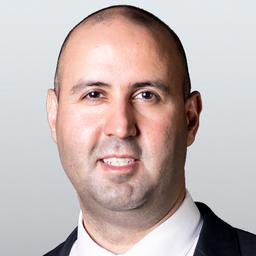U.S. President Donald Trump says tariffs on Canadian oil may be set at 10 percent, a lower rate than the other goods that are subject to 25 percent tariffs. He also said the tariffs on oil and gas may come on Feb. 18, later than the Feb. 1 date set for other Canadian imports.
Trump confirmed the looming tariffs on goods from Canada, Mexico, and China on Jan. 31, saying the countries are responsible for the inflow of fentanyl into the United States. He has also cited the flow of illegal immigrants and trade deficits as reasons for the tariffs.
The U.S. president said he expects tariffs to apply to microchips, oil and gas, steel, and aluminum. He added that tariffs on copper will also come at a future date.
“We’re going to put tariffs on oil and gas. That'll happen fairly soon, I think around the 18th of February,” Trump told reporters at the Oval Office in the White House on Jan. 31.
“We think we’re going to bring it down to 10 percent on the oil.”
“It’s not what we want, but if he moves forward, we will also act,” Trudeau told reporters on Jan. 31.
Ottawa has launched a $1.3 billion plan to boost border security, which includes deploying helicopters and drones and setting up new task forces. The provinces have also announced their own plans, which include using provincial police forces to patrol the border, and other actions.
Trump said on Jan. 31 that there is nothing the countries can do at this point to prevent the tariffs from coming into force on Feb. 1.
“No, not right now,” he told reporters.
Asked if Canada’s efforts so far have been in vain, Public Safety Minister David McGuinty said increasing border security is helpful to both Canada and the United States.
“We’ve made huge improvements on different fronts, including dealing with migration, dealing with the fentanyl problem,” McGuinty said at a joint press conference with Foreign Affairs Minister Mélanie Joly and Immigration Minister Marc Miller in Washington hours after Trump’s remarks on Jan. 31.
Joly said she is still engaging with the Trump administration as well as “key Republican senators” and Democrats, but added that should the tariffs come, Canada will “have a strong retaliation plan.” She said Canada’s retaliatory tariffs would come in rounds.
US Tariff Rounds
Trump’s nominee for secretary of commerce, Howard Lutnick, suggested at his confirmation hearing on Jan. 29 that the president’s tariffs could entail two rounds. He said the first set of tariffs are meant to elicit action from Canada and Mexico to stop the flow of illegal immigrants and drugs into the United States through their borders. The second round of tariffs, which he said would come later, would be targeted at unfair trading practices.“This tariff model is simply to shut their borders,” Lutnick said. “Respect America, if we are your biggest trading partner, show us the respect.”
He alluded to Trump’s executive order signed on his first day in office on Jan. 20 requiring officials to “investigate and remedy persistent trade deficits and address unfair trade and currency policies by other nations.” Lutnick said those assessments would come out by April, and they may entail additional tariffs.
“Big macro issues with tariffs are being studied. But the micro issue is Canada and Mexico and the [fentanyl] precursors from China. They need to end,” he said.
Minister Joly said Canada is participating in the U.S. officials’ study of trade relations mandated by Trump’s executive order.







